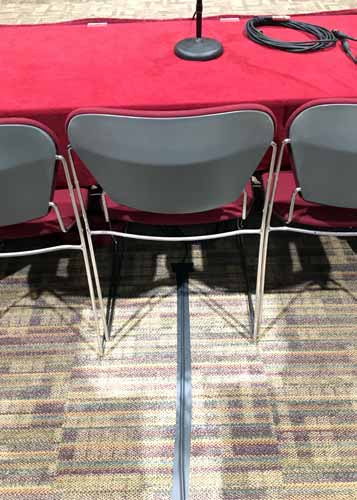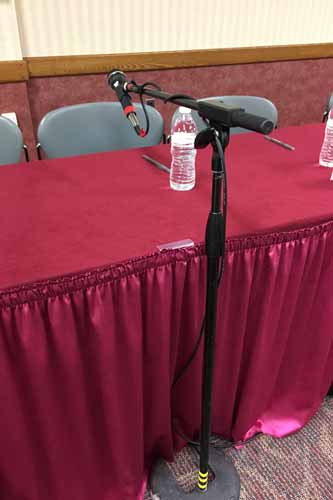Cables & Connectors
Topics
- Cable Identification
- Cable Types
- Wrapping Cables
- Taping Cables
General Guidelines
First
Use the shortest cable possible, while leaving 3-5ft slack on each side, to prevent RF interference and cluttered setups.
Second
Keep cables loose and relaxed with approx. 3-5ft slack on each side. Leaving slack on each side of the cable enables a user/presenter to move equipment around during an event or presentation without tearing up the tape and causing a jumbled mess from the tape sticking to the cable(s).
Third
Always test the cable prior to taping it down. This saves time in not taping down a cable and having to tear it up to reset another cable, and then re-taping the cable after testing it. Additionally, you don't waste expensive gaffers tape.
Fourth
Cables must look nice and presentable using straight runs and 90 degree corners.
Fifth
Do not step on, allow cables to be crushed by chairs, or run over cables with equipment. This can break the wires inside the cable and make the cable not work.

In the figure 1 example, the chair will inevitably be moved. The person sitting at the chair may most likely not be aware that he could cause harm to the cable. Thus if the person is not paying attention and shifts his chair, the legs of the chair may fall across the cable and ultimately damage the cable.
Sixth
Wrap cables around mic stands loosely 2 times total. If a boom stand: Wrap the cable around the base tube once, and around the boom arm once.

Seventh
Do not run sound cables and power cables or lighting cables parallel (side by side) to each other. If cables absolutely must cross each other, make them cross at one point only. This practice helps to eliminate the 60 Hz hum that will occur if too many power cables are run alongside sound cables.